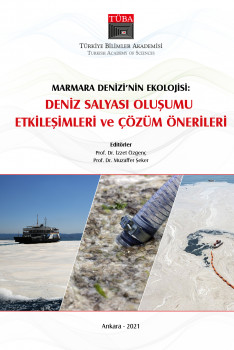The Mucilage Problem in Marmara: Definition, Causes, Dimensions, Evaluation and Recommendations For Solution

The Mucilage Problem in Marmara: Definition, Causes, Dimensions, Evaluation and Recommendations For Solution
Background information on mechanisms and possible governing factors for marine mucilage formation was provided and the studies focusing on the cases previously recorded at the Marmara Sea were briefly evaluated. Current status of the Marmara Sea regarding the hydrodynamic/oceanographic factors taking part in mucilage formation were described, water budgets were reflected and percentages of discharges transported to the basin were summarized. Water transports and currents within the system were evaluated and regions with significantly low surface currents were indicated. Regarding pollution load exchanges between the Marmara Sea and the Black Sea, pollution loads transported from the Black Sea to the Marmara Sea by the upper current and those transported in the opposite direction by the lower current were calculated. Rivers discharging to the upper layer of the Black Sea were identified as the main sources of nutrient inputs (N, P) supporting high primary productivity in the Black Sea, whereas relative contribution of the Marmara Sea was said to be limited. In contrast, upper currents from the Black Sea and the wastewater discharges from the cities located around the Marmara Sea -of which more than half of those applying only pre-treatment before discharge, and primarily discharges from Istanbul, were determined as the two main sources of the nutrients/pollution loads ending up in Marmara. In order to reach to the anticipated target of “less stringent water quality” determined within the scope of water quality and ecological state of the Marmara Sea, the need for decreasing the pollution loads reaching to the basin at the highest achievable level was highlighted, careful eutrophication monitoring in some regions within the basin was proposed and the need for implementing biological C, N, P-removal treatment options for all wastewater discharges reaching to the Marmara Sea (with the exception of the Istanbul Strait) was stated. Lastly, solutions for decreasing the pollution loads at a level required by the “Good Water State” of the Marmara Sea were proposed.
